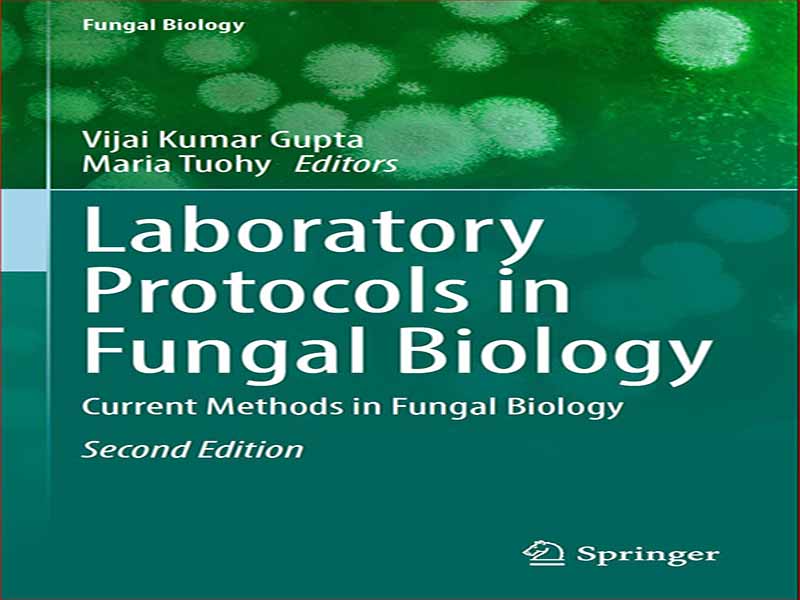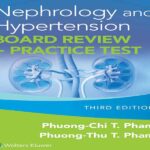- عنوان کتاب: Laboratory Protocols in Fungal Biology
- نویسنده: Vijai-Kumar-Gupta
- حوزه: بیولوژی قارچی
- سال انتشار: 2022
- تعداد صفحه: 265
- زبان اصلی: انگلیسی
- نوع فایل: pdf
- حجم فایل: 5.28 مگابایت
میکروارگانیسم ها مواد اساسی برای مطالعات علمی و عملی هستند. مجموعههای فرهنگ (مراکز منابع بیولوژیکی) نقش اصلی را در حفظ پایدار و ذخیرهسازی طولانیمدت منابع میکروبی ایفا میکنند و دسترسی منظم به سویههای مستند را پس از مدتها از جداسازی آنها برای استفاده علمی یا بیوتکنولوژیکی تضمین میکنند. روش های مختلفی برای حفظ کشت های قارچی گزارش شده است. روشهای انجماد (لیوفیلیزاسیون) و انجماد برای هزاران گونه قارچی در مجموعههای میکروبی در سراسر جهان استفاده میشود. با این وجود، واضح است که سویههای قارچی گونههای مختلف در توانایی زنده ماندن پس از نگهداری طولانی مدت در شرایط آزمایشگاهی متفاوت است. نگهداری برخی از آنها در محل بسیار دشوار است، در حالی که برخی دیگر را می توان به راحتی و با موفقیت با استفاده از تقریباً هر تکنیک حفاظتی زنده نگه داشت. روش های نگهداری قارچ های رشته ای ناشی از نوع و درجه هاگ زایی است. سویه های تشکیل دهنده هاگ (برخلاف سویه های غیر اسپورزا) می توانند به طور موثری در انجماد خشک شوند. هر دو نوع را می توان منجمد کرد و برای مدت طولانی در نیتروژن مایع یا در یخچال با دمای پایین نگهداری کرد. تجربه نگهداری طولانی مدت سویه های قارچی نشان می دهد که مدت زمان نگهداری به طور مستقیم نه تنها به انتخاب روش بلکه به پروتکل آزمایشگاهی و دمای نگهداری کشت های بعدی بستگی دارد. این فصل روشهای انجماد، خشک کردن انجمادی، خشک کردن بر روی سیلیکاژل، و نگهداری در خاک استریل را که در مجموعه قارچ VKM استفاده میشود، همراه با دادههای مربوط به حداکثر زمان ذخیرهسازی ثبتشده ارائه میکند. روش ها ویژگی های خاص فرهنگ های حفظ شده و همچنین تجهیزات مورد استفاده را در نظر می گیرند. مجموعه قارچی VKM (مجموعه همه روسی میکروارگانیسم ها، روسیه) در سال 1955 تأسیس شد و دارای تجربه طولانی مدت در حفظ و نگهداری کشت های قارچی است. مجموعه قارچ های رشته ای در حال حاضر از حدود 7000 سویه (590 جنس، 1600 گونه) متعلق به گونه های پادشاهی Chromista (Oomycota) و Fungi (قارچ های zygomycetous، ascomycetous و basidiomycetous) تشکیل شده است.
Microorganisms are fundamental materials for scientific and practical studies. Culture collections (biological resource centers) play a primary role in the stable preservation and long-term storage of microbial resources and ensure regular access to well-documented strains after a long time from their isolation for scientific or biotechnological use. Various methods of preservation of fungal cultures have been reported. Freeze-drying (lyophilization) and cryopreservation methods are utilized for thousands of fungal strains in microbial collections all over the world. Nevertheless, it is clear that the fungal strains of different species vary in the ability to survive after long-time storage preservation under laboratory conditions. Some of them are very difficult to maintain ex situ, whereas others could be easily and successfully preserved alive by using almost any conservation technique. Storage methods for filamentous fungi result from the type and degree of sporulation. Spore-forming strains (as opposed to nonsporulating strains) can be effectively freeze-dried. Both types can be frozen and stored for long periods in liquid nitrogen or in a low-temperature refrigerator. The experience of long-term preservation of fungal strains shows that the duration of storage directly depends not only on the choice of the method but also on the laboratory protocol and temperature of subsequent cultures storage. This chapter presents the methods of cryopreservation, freeze-drying, drying on silica gel, and preservation in sterile soil that are utilized in VKM fungal collection, accompanied by data on maximal storage time registered. The methods take into consideration the special features of cultures preserved as well as the equipment used. VKM fungal collection (All-Russian Collection of Microorganisms, Russia) was established in 1955 and has a long-term experience in the preservation and storage of fungal cultures. Collection of filamentous fungi is currently composed of approximately 7000 strains (590 genera, 1600 species) belonging to species of the kingdoms Chromista (Oomycota) and Fungi (zygomycetous, ascomycetous and basidiomycetous fungi).
این کتاب را میتوانید از لینک زیر بصورت رایگان دانلود کنید:
Download: Laboratory Protocols in Fungal Biology




































نظرات کاربران